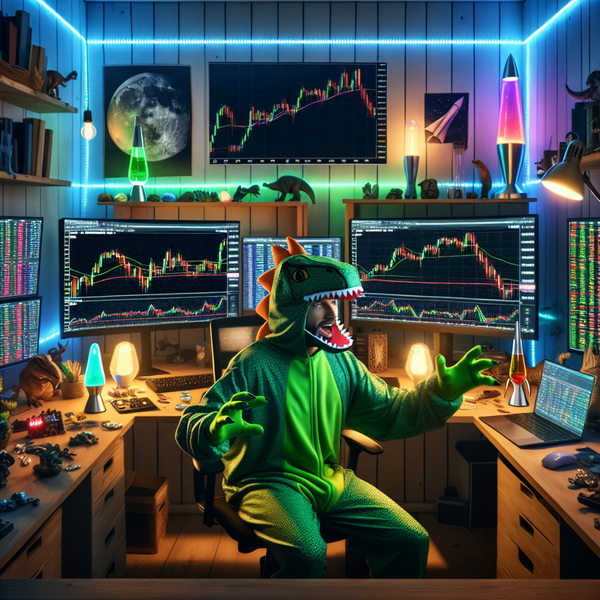ES Futures Trading Hours: Best Times To Trade

What Are ES Futures?
The Basics of the S&P 500 E-mini Futures
The S&P 500 E-mini futures (often called ES futures) are one of the most actively traded futures contracts in the world. Trading under the symbol ES, this contract tracks the performance of the S&P 500 index and allows traders to speculate on its price movements. ES futures offer flexibility with their lower margin requirements compared to full-sized contracts, making them accessible to a wide range of traders. These futures are traded electronically, providing nearly 24-hour access at prop firms like Funded Futures Network. They’re a cornerstone of the US futures market and a fundamental tool for both institutional and retail participants. ES futures trading hours provide nearly 24-hour access to the markets, making them ideal for active traders and global participants. The E-mini S&P 500 (ES) futures trade on the CME Globex platform from Sunday at 6:00 p.m. to Friday at 5:00 p.m. Eastern Time, with a daily maintenance break from 5:00 p.m. to 6:00 p.m. This extended schedule allows traders to respond to global news and economic events as they unfold, enhancing flexibility and opportunity in ES futures trading.
Why ES Is a Go-To for Day Traders and Funded Accounts
ES futures are extremely popular among day traders and those using funded accounts because of their high liquidity and tight spreads. The consistent volume ensures reliable order execution, which is crucial for quick trades and strategy adjustments. Funded accounts, like those offered on Funded Futures Network, appreciate ES contracts due to clear rules and transparent pricing. Are you looking for a product with opportunities across market conditions? ES futures stand out with the flexibility to profit in both rising and falling markets, making them ideal for traders eager to optimize their edge.
What Are the ES Futures Trading Hours?
Standard Trading Schedule (Globex Hours)
The standard ES futures trading hours are nearly 24/5, operating on the CME Globex electronic platform. Trading begins Sunday at 6:00 p.m. ET and continues until Friday at 5:00 p.m. ET, with a daily one-hour break from 5:00 to 6:00 p.m. ET. This extended session provides access to global futures trading times, allowing traders to participate in different time zones. It’s essential to familiarize yourself with the Globex holiday schedule to know when the market will be closed or have modified hours. Understanding futures market trading hours helps you make better trading plans and maximizes your participation.
Futures Exchange Hours vs. Cash Market Hours
Futures exchange hours differ substantially from cash market hours. While ES futures trade for nearly 23 hours daily, the US stock market (cash session) is open from 9:30 a.m. to 4:00 p.m. ET on regular business days. This difference means ES futures allow traders to react to global events outside stock exchange hours. For those who manage portfolios or risk, these extended futures exchange hours can make a significant impact on strategy. Capitalizing on these differences can help traders avoid gaps and seize unique opportunities unavailable in the cash market.
How the 23-Hour Window Impacts Strategy
Having almost 23 hours of available trading time changes the game for active traders. It gives more flexibility to manage trades around the clock, especially in response to unexpected news or global developments. However, not all hours are equally active—liquidity and volatility will fluctuate, so it’s important to know when futures market hours best fit your trading style. Do you prefer slow, steady markets or the excitement of rapid price moves? The ES contract offers the flexibility to adapt and implement various futures trading strategies throughout the day and night.
Best Time of Day to Trade ES Futures
When Volume and Volatility Peak
The best trading opportunities in ES futures often arise during times of highest volume and volatility. Typically, this coincides with the US cash market opening (9:30 a.m. ET) and the first couple of trading hours. Volume also spikes around significant economic releases and the closing bell (4:00 p.m. ET). Knowing these peak periods is crucial for anyone who relies on fast order fills or uses short-term strategies. Have you noticed how price tends to move faster and offer more trading setups during these windows?
Early Morning vs. Power Hour
The early morning session—right after the futures market opens in the US—often brings the most explosive price moves. Traders flock to the market as overnight positions unwind, new orders flood in, and economic data is released. The last hour before the cash close, known as the Power Hour, also provides rich trading opportunities, with increased liquidity and end-of-day order activity. Comparing these two periods can help you decide whether to trade the morning rush, the afternoon excitement, or both. Are you more comfortable with the chaos at the open or do you prefer the strategic moves of the closing bell?
Pros and Cons of Overnight ES Futures Trading
Smoother Price Action
Trading ES futures during overnight hours often results in smoother price action. Without the barrage of US economic releases and stock market openers, price movements can be more orderly. This environment is often ideal for traders who use strategies that benefit from lower volatility and less whipsaw. Do you prefer a market that moves at a controlled pace, giving you time to analyze and enter trades thoughtfully?
Less Noise
Overnight sessions tend to be quieter, with fewer large players and news events driving rapid price changes. This reduction in “noise” is attractive to traders seeking to avoid being caught by unpredictable spikes. However, it’s important to remain cautious, as thinly traded markets can sometimes mask hidden dangers. Less noise can mean more consistency, but are you prepared for rare, sudden shifts?
Lower Volume
While the overnight session can offer smooth and predictable trends, it usually comes with lower trading volume. This factor means there may be wider bid-ask spreads, making it harder to get filled at desired prices. The lower activity can limit the effectiveness of certain trading strategies that rely on high volume. Will your trading approach handle the potential for reduced liquidity and delayed fills?
Risk of Sudden Spikes
Despite the generally quiet overnight session, ES futures are still vulnerable to sudden, outsized moves. Unexpected global news, geopolitical events, or economic surprises can trigger sharp spikes with little warning when liquidity is thin. This risk can catch traders off guard and lead to slippage or unplanned losses. How do you manage your risk when the market can suddenly turn on a dime during less active hours?
Market Holidays and Their Impact on Futures
How Holidays Affect Volume and Liquidity
Market holidays can significantly impact futures trading hours, often causing sharp drops in trading volume and liquidity. When major US holidays like Thanksgiving or Independence Day approach, you’ll notice quieter markets and fewer trading opportunities. Some traders reduce their activity or avoid trading altogether during these periods, as price action can be erratic and unpredictable. If you plan to trade during a holiday week, check the Globex holiday schedule for details. Why risk trading when many professionals are out of the market and volatility doesn’t follow normal patterns?
Partial Days, Full Closures, and Dead Zones
Not every market holiday means a full closure; sometimes, futures market trading hours are abbreviated or adjusted. The CME might have partial days where trading closes early, or sessions may open late. These “dead zones” often result in low volume, making it challenging for traders to find reliable setups or maintain consistent results. Always checking market holidays and planned closures ahead of time can help you avoid frustration and unexpected trading conditions. Would you rather trade in thin, unpredictable conditions, or take a well-deserved break?
Futures Trading Hours vs. Other Markets
How ES Compares to Forex and Crypto
Unlike traditional stock markets, ES futures trading hours provide extensive flexibility, much like Forex which operates 24/5 across global time zones. However, ES features set daily breaks and longer holiday closures, while cryptocurrencies trade 24/7 without pause on platforms like CoinMarketCap.com. This means that crypto traders never worry about market holidays, but also lack the structured, regulated breaks of the ES futures market. How do these differences affect the way you manage risk and trading discipline?
Why Futures Hours Offer an Edge for Funded Traders
For funded traders, consistent access to nearly round-the-clock markets is crucial for fulfilling performance targets and managing risk. The predictability and structure of ES futures exchange hours contrast with the wild swings often seen in unregulated markets. Funded accounts often have rules that require traders to be selective about trading times, and the futures market’s schedule supports disciplined trading. Do you see how sticking to well-defined hours can help you achieve long-term profitability and control over your results?

The Role of Economic Events in Choosing Trading Hours
When News Drops (and What to Avoid)
Major economic events and news releases are the catalysts behind some of the biggest price moves in ES futures. Important data—like CPI, nonfarm payrolls (NFP), and Fed announcements—typically drops at set times, often during or just before the US market open. Savvy traders study economic calendars from sources such as Investing.com and plan trades accordingly, sometimes avoiding the immediate aftermath to sidestep unpredictable swings. Could timing your entries and exits around these moments improve your trading outcomes?
Navigating CPI, FOMC, and NFP Volatility
Events like the Consumer Price Index (CPI), Federal Open Market Committee (FOMC) statements, and Non-Farm Payrolls (NFP) can generate extreme volatility in ES futures. Experienced traders use these windows for high-risk, high-reward trades or temporarily step back to avoid whipsaw moves. Knowing when and how these events impact the futures market hours can be a deciding factor in your strategy. Are you equipped with a plan for handling the chaos when the biggest economic events rock the markets?



